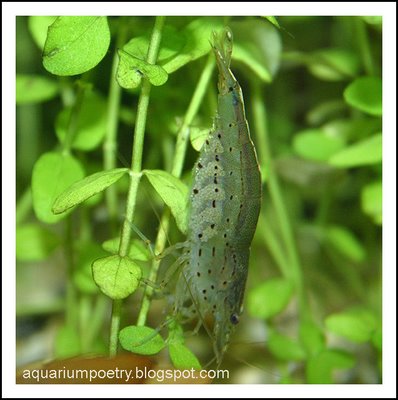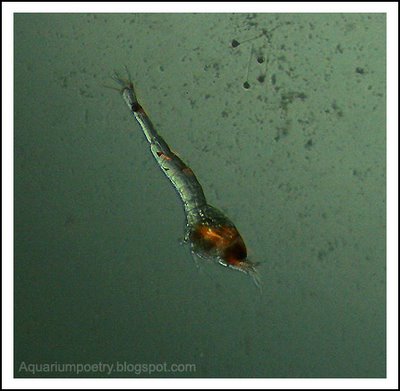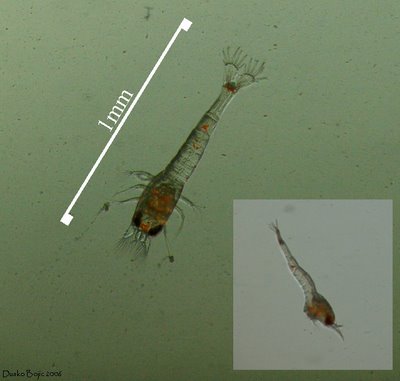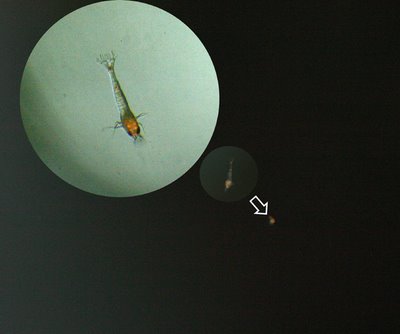Conclusion !
To bring my first Amano breeding attempt to the end. I was following the article written by Heather Canderlaria, and I have to say that this article is not much of a truth. Heather probably had experienced another Caridinia spp but not the C. japonica. I tried it and it doesn't work. This is not just my opinion. Other Shrimp breeders on www.petshrimp.com forum agree that this article is useless!
Another useless article is written by Wilma Duncan. This one is a funny case, must say. Lots of people actually believe Wilma and find this article of hers quiet charming. Of course it is far from it! She describes her first Amano larvae experience with words "The tank was full of baby shrimp hiding among the plants." , how charming. But there is one cruel truth proving her wrong! Amano baby's are free floating larvae (doesn't look like baby shrimp) and they float in the open water. She didn't mention any free floating larval stage...hm!
To be even worst she claims that this Amphipod/Scud is the baby Amano shrimp! I don't think there is more needed to prove this article wrong. Well if she would change the article name to Breeding and Raising the Amphipod/Scud it would probably be the truth, but who would know that. On the side bar you will notice links to the False Breeding method 1 and 2. I already mentioned them.
Thanks god we do have some real Amano breeding articles that are not a myth and to be even better, are illustrated !
One of them is the article written by Mike Noren. It is realistic and the illustration are showing the raising progress. The salinity is closely measured. I will try this article soon. Second article that is recommended is written by the French and is saying almost the same what Noren mentioned.
One good thing to start with is to know the difference between the male and the female Caridina japonica. The first photo shows the male, that is smaller than female. Grows to 3.5cm. You can see three rows of dots on the side of its body. Females middle line is different.

The females middle line is more formed out of short lines. As well as that the female grows up to 5 cm and has a less transparent body than the male. The female carries the eggs.










